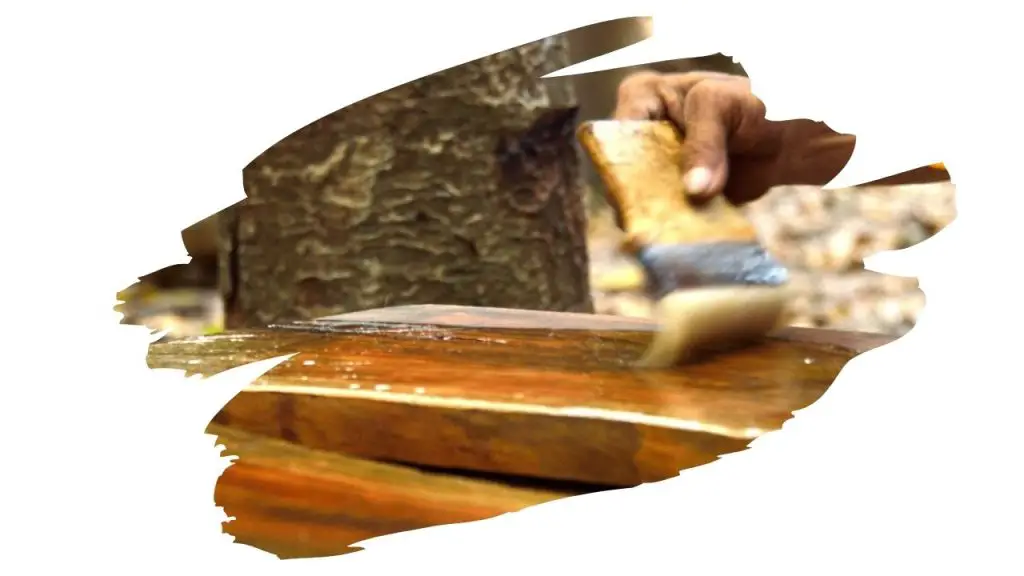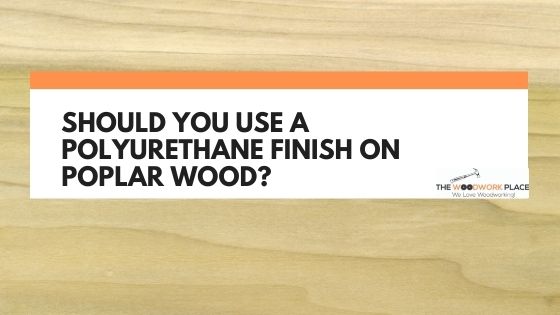A clear coat of polyurethane is a great way to protect a stain finished work craft from fading fast. And it is quite often the final step you’ll take before patting yourself on the back for a job well done.
So it can be frustrating having to sit around twiddling your thumbs whilst you wait for those poly layers to dry in-between coats.
But what happens when a poly coat stays sticky because that polyurethane is not drying?
There are a few reasons why that polyurethane coat hasn’t dried. If the coat of poly is too thick, it’ll take longer to dry. If the weather is particularly cold or humid, then polyurethane needs more time to dry and cure.
Is it all really that simple? Or are there some things you can do to get that poly to dry sooner rather than later? Keep reading to discover more…

This post may contain affiliate links to products that we receive a commission for (at no additional cost to you). Learn more here.
Polyurethane Not Drying? The 5 Main Causes
There are usually 5 main reasons why a polyurethane coat struggles to dry;
1. Not Enough Time
This seems like a simple answer, but waiting a little longer for the polyurethane to dry can solve this problem.
The issue of not waiting long enough for the poly to dry tends to crop up as a result of not knowing which type of polyurethane you are using.
There are two main types of polyurethane coats; oil-based and water-based.
A key difference between the two is visual; water based poly’s are clear, whilst oil-based ones have an amber tone to them.
But, another major difference between these two poly’s is their drying time. Water-based polyurethane can dry much faster than their oily counterparts. In fact, they dry in as little as a third of the time of an oil-based poly.
How Long Does Polyurethane Take To Dry? Water-based polyurethane takes 4 to 6 hours to dry, and takes up to 2 weeks to cure. Oil-based polyurethane, on the other hand, takes a minimum of 24 hours to dry. And it can take up to 30 days to cure.
Dry Polyurethane v Cured Polyurethane Explained:
Drying and curing are used interchangeably when describing drying times for finishes. However, they describe two different things.
When a polyurethane coat is referred to as being dry, it is when solvents in the poly have evaporated, causing the polyurethane to turn from a liquid into a solid film coat.
But when polyurethane cures, we are referring to a chemical reaction that changes the polyurethane coat into a hard tough resin.
2. Low Room Temperature
A fast drying polyurethane takes around 4 to 6 hours to dry at room temperature.
However, if the weather is particularly cold, it can take much longer to dry.
3. Coating Too Thick
Ideally, when you apply polyurethane, you need to be stingy with it. Each coat should be brushed on thinly using a natural bristle brush (although a foam brush will do).
And if you want polyurethane to offer more protection, then apply additional coats (each one equally as thin as the last). Thin coats will go a long way towards improving drying speeds, (as opposed to simply slapping on a thick poly coat or two).
4. Lack Of Air Movement
Letting polyurethane dry in an area that has a bit of air movement is really important. Cracking open a window, (or even letting the wood craft dry outside if possible), will help that sticky coat to evaporate away.
5. Poly Has Gone Off
The shelf life of polyurethane is a finite one. Don’t get me wrong, it can still last a good long while. In fact, after you open that container, well-stored polyurethane can last 10+ years.
However, if that polyurethane starts to look all congealed and gunky, then it might be high time to replace it with a fresh can.
Now, you could try to thin out congealed polyurethane using mineral spirits. However, getting the poly back to its original consistency doesn’t mean that it will back to its original usability. In other words, you’ll find it much easier to simply ditch that old poly completely.
How Do You Properly Store Polyurethane? Polyurethane should be stored in an air-tight container. That container should then be placed in a cool dry place, away from direct sunlight.
So, How Do You Get Polyurethane To Dry?
A. Turn Up That Dry Heat
Try moving the polyurethane coated work piece to an area that is warmer. Even something as simple as turning up the thermostat dial can help.
What Temperature Does Polyurethane Need In Order To Dry? If using a quick-dry poly, such as Minwax’s Fast-Drying Polyurethane, then you want to let it dry in a room with the temperature set at 77°F (25°C)
Does Polyurethane Dry Faster In The Sun?
No, it does not.
Admittedly, the heat of the sun may speed up the drying process. However, those direct UV rays from the sun can damage typical polyurethane clear coats.
Now, there are some poly finishes that contain UV blockers. So, once the polyurethane is cured, those UV blocker additives can help to prevent fading and graying due to sunlight.
But while the polyurethane is still wet, (and far from fully cured), it’s best to err on the side of caution and avoid placing it under direct sunlight.
B. Turn On That Hair Dryer
So, can you dry polyurethane with a hairdryer? Yes, you can. You would do this by applying direct heated airflow to the sticky poly.
It is a time suck though, as you will need to point the hair dryers nozzle right up close to it, section-by-painstaking-section.
Still, this isn’t really a good option for drying poly. Why? Well, personally, I would be worried about all of that high-powered air kicking up dust, only for that dust to start sticking to the still-wet coat.
Plus, it is hard to get the entire surface to dry evenly when you are applying heat in such as spot-specific way.
C. Turn On The Dehumidifier
Lowering the humidity in the room can work wonders. So placing a dehumidifier nearby to help reduce the moisture in the air.
Can You Speed Up Polyurethane’s Drying Time?
The real question you should be asking yourself isn’t if you can, but rather if you should.
Making it easier for polyurethane to dry (air flow, higher heat, etc) is one thing. However, you still want that poly finish to dry at a practical pace (which is another reason why I don’t like the hair dryer option).
When polyurethane dries too quickly it can begin to crack. And when that happens, you are going to end up wasting time trying to sandpaper those fractures away later on.
So, if you want polyurethane to dry quickly, your best option is to simply purchase and use a fast-drying polyurethane right from the start.
Minwax Fast-Drying Clear Finish Polyurethane is great on interior wood surfaces such as furniture, crafts, doors and cabinets. It can dry in as little as 4 hours, yet it is still incredibly durable.
Check out the latest prices for Minwax Polyurethane Finish over on Amazon.com
Final Thoughts
Getting polyurethane to dry properly is more about doing a few double checks before you begin applying it. So, beforehand, make sure that you;
- Use a quick drying poly finish.
- Make sure each coat is thinly layered.
- And let it dry in a low humidity area where the room temperature is around 77°F (25°C).




![Can You Put Polyurethane Over A Tru-oil Finish? [3 Quick & Easy Tips] polyurethane over tru oil](https://www.thewoodworkplace.com/wp-content/uploads/2022/01/Banner-157.jpg)